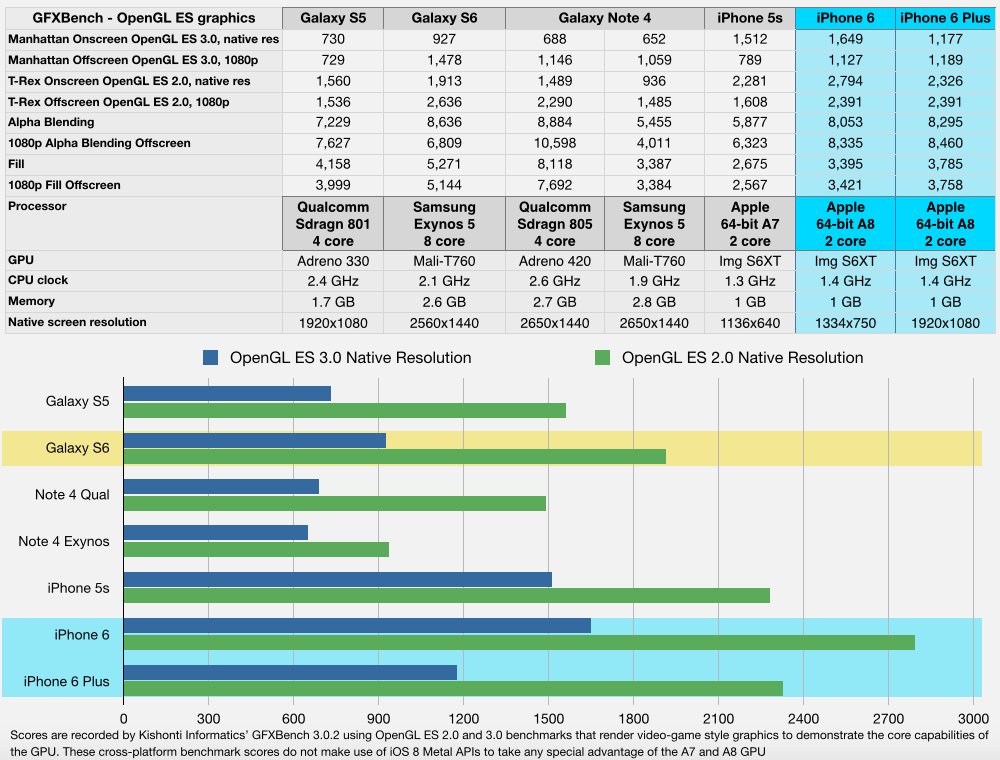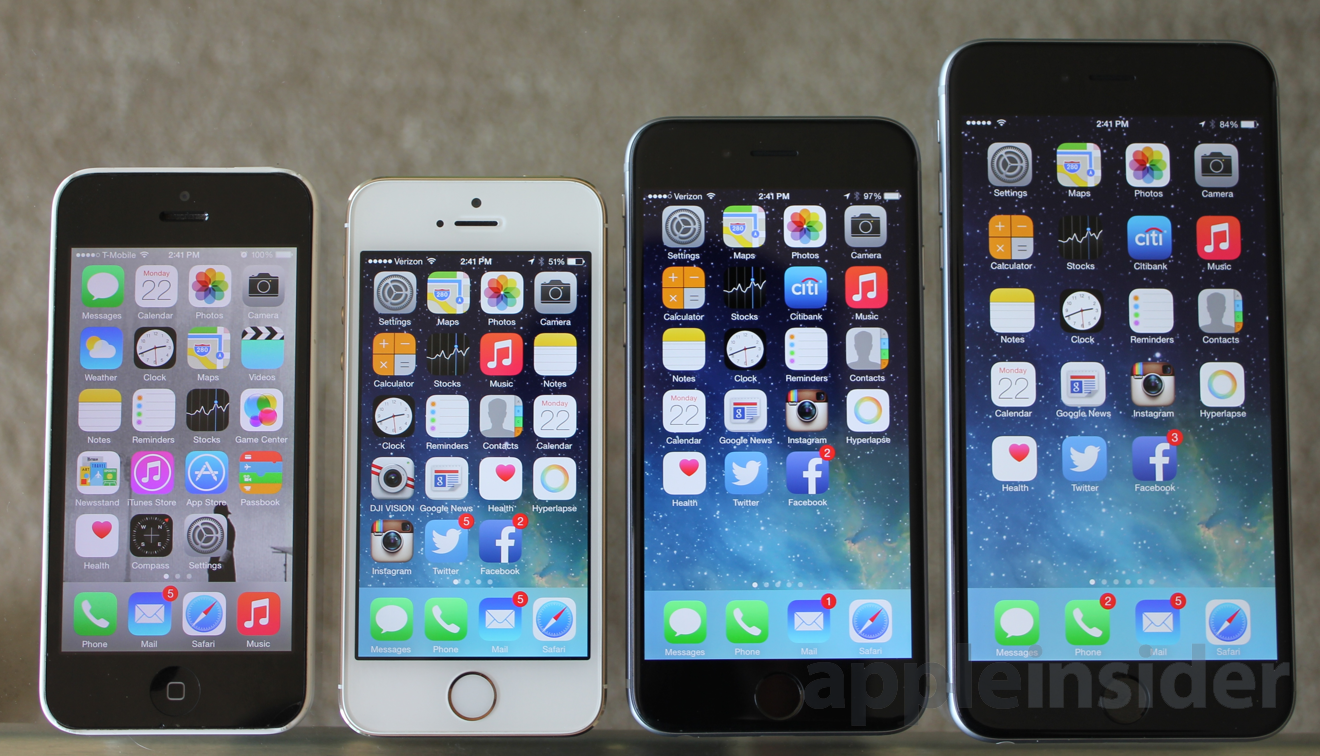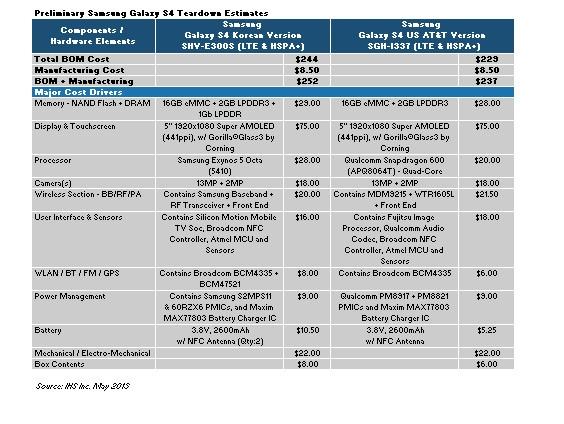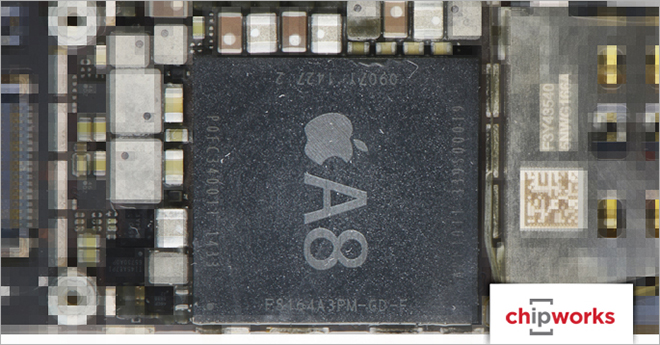While boasting an "Octa Core" Application Processor and an extremely high resolution display, Samsung's new Galaxy S6 falls flat in running GPU intensive apps and games — particularly in comparison to Apple's iPhone 6 and 6 Plus.
The first benchmarks showing off the actual performance users will get from the new Galaxy S6 highlight that Samsung appears to still be making poor engineering choices, and that the conventional wisdom about Samsung's advantages in operating its own chip design and fab are also wrong.
Bad Engineering Choices
In an apparent effort to win the "spec war," Samsung began aggressively cranking up device resolutions on its most expensive premium flagships after Steve Jobs demonstrated iPhone 4's Retina Display back in 2010. Prior to that, Samsung was internally focused on smaller devices, not larger, higher resolution displays.
In contrast, Apple has followed a pattern of changing its flagship iPhone resolutions every two years, making iPhone 5 taller and the new iPhone 6 & 6 Plus both larger and more pixel dense in the move to "Retina HD" displays.
The most obvious result of Apple's strategy has been that iOS app developers have had a much easier time managing the changes in resolution, so they can focus on new apps and features rather than testing across a broad range of configurations. That's apparent in the fact that nearly all new apps and games appear on iOS first, and only arrive on Android after they've proven to be broadly popular in Apple's App Store.
However, there's also another problem: by pushing resolution numbers so fast (and without any regard for whether having more pixels actually makes a discernible, qualitative difference), Samsung has pushed screen technology ahead of its own processor capabilities, resulting in extremely poor performance in high definition.
Last fall, AppleInsider noted that Apple's own leap to a Retina HD 1080p screen on iPhone 6 Plus resulted in graphics that were in some cases slower at their native resolution than 2013's iPhone 5s: rendering a challenging OpenGL ES 3.0 3D scene dropped frame rates from 24.4 to 19.2 fps.Samsung's new "Exynos 7" powered Galaxy S6 drops down to 15 fps— just 78 percent of the framerate of iPhone 6 Plus— in the same test
Samsung's higher resolution Galaxy S6 (or equally high resolution Galaxy Note 4 "fablet") both turn in benchmarks significantly lower than Apple's existing iPhone 6 Plus— and less than half that of last year's iPhone 5s. In terms of fps, the latest benchmarks show that Samsung's new "Exynos 7" powered Galaxy S6 drops down to 15 fps— just 78 percent of the framerate of iPhone 6 Plus— in the same test.
Looking at the competitive low-level theoretical scores of the GPUs Samsung uses (combined with much higher clock rates and more RAM), it appears that the company's devotion to extremely high resolution numbers is a spec list checkmark (rather than a real feature that benefits users) and is a primary contributing reason for poor real life scores in rendering 3D OpenGL scenes.
In other words, the chips Samsung is choosing to use could theoretically match Apple's latest iPhones if they were not also driving tons of additional pixels that contribute little to no benefit to users. Think of it as a reasonably powerful engine installed into a monster truck with massive wheels it can barely turn.
That's the same issue that plagued Samsung's Note 4 last fall. The company began marketing Note 4 to less sophisticated buyers as a "for the colorful" device along the lines of Apple's iPhone 5c ads, in a series of "Love Notes" spots.
Samsung again appears to have picked the wrong screen resolution for Galaxy S6, given the horsepower of its internally designed Exynos 7 Octa Core Application Processor, which the company will now be using in most markets rather than the historically faster Qualcomm Snapdragon chips it formerly used in its flagship smartphones.
Of course, at the same time there are also a variety of other Android devices with the same 1080p resolution as iPhone 6 Plus, and they don't score as well either. That's a fact we earlier blamed on Google's Android, particularly its shoddy implementation of OpenGL that squanders the capabilities of faster chips with more cores and more available RAM.
Apple's iPhone 6 A8 GPU destroys Galaxy S5, HTC One M8, Moto X & Nexus 5 /w fewer, slower cores & much less RAM $AAPL pic.twitter.com/SMgPqoYYrC
— Daniel Eran Dilger (@DanielEran) October 1, 2014Samsung falling behind in Application Processors
Last fall, Samsung scrambled to bring its Note 4 to market in the wake of iPhone 6 Plus, but GPU details of the Note 4 were quickly made available on Kishonti Informatics' GFXBench website. That same information is now available for the Galaxy S6.
What it shows is not just an underpowered leap to an "even-higher resolution" screen, but also that Samsung is continuing to license basic ARM Mali graphics for use in the Exynos Application Processors for its premium devices— despite expecting the same price from consumers as Apple's iPhones, but for a less powerful, less responsive device. In some cases, the new flagship is even more expensive than Apple's iPhone.
At the same time, Samsung is continuing to market its Eyxnos 7 chip as "Octa Core," as if the number of cores are a meaningful frame of reference in terms of power or capacity. The CPU (also a stock ARM design) is only intended to use four cores at a time; there are two sets of cores, four that run at top power, and four baby cores that coast along very efficiently when the device is in standby. Running all eight doesn't even make sense.
Specifically, the Galaxy S6's Exynos 7 7420 is an ARM "big.LITTLE" design that pairs together sets of four A57 and four A53 cores, each pair designed to work at different clock speeds. Calling Samsung's Exynos "8 core" is like calling a truck "4 wheel drive" when it can effectively only power two wheels at once.
In contrast, Apple has purposely avoided ARM's stock big.LITTLE architecture in its own Cyclone A7 and A8 core designs, both of which use fewer cores and more advanced core management to deliver better performance at lower power consumption than the stock ARM technology that Samsung is using.
The Y of Exynos
Samsung develops its own Exynos Application Processors to eventually replace Qualcomm; that's not been previously possible because Qualcomm holds patents on CDMA, LTE and other advanced carrier technology.
Both Apple and Samsung have used Qualcomm's baseband chips to handle wireless modem features while their own proprietary Ax or Exynos Application Processors run the rest of the phone or tablet. Samsung (and likely Apple, too) has sought to integrate its own baseband modems into its own Application Processors rather than paying Qualcomm for a separate chip.
Samsung's Exynos has previously fueled experiments with Qualcomm-competing designs in limited markets, both in products that either use Intel's LTE baseband chips or Samsung's own modem-integrated packages. Samsung is now making broad use of its own Exynos chips in Galaxy devices.
Read Samsung's marketing doublespeak press release that Shara Tibken loosely edited for CNET and you get a sense of how strategically perfect this sort of muddled, non-specific mess of billowing specifications works to confuse rank and file tech journalists incapable of critical review.
On the other hand, when Samsung shipped defective Exynos Galaxy S4 devices the summer before last with what AnandTech described as "a broken implementation of the CCI-400 coherent bus interface" with "implications [that] are serious from a power consumption (and performance) standpoint," the news was rarely reported, in part because "neither ARM nor Samsung LSI will talk about the bug publicly, and Samsung didn't fess up to the problem at first either - leaving end users to discover it on their own."
Back then, iSuppli reported (above) that Samsung's Galaxy S4 equipped with its own Exynos 5 Octa was substantially more expensive than the North American version of the same phone shipping with a Qualcomm Snapdragon (and both were estimated to be more expensive than iPhone 5).
Samsung's problems with defective Exynos designs (despite using off-the-shelf ARM technology), paired with chips that are not only more expensive to build but also lack the economies of scale that Apple's A7 and A8 have enjoyed— across tens of millions of iPhones and iPads— makes it easy to understand not only why Apple is more profitable, but also why its Application Processor technology is rapidly evolving faster than Samsung's.
An even more serious problem for Samsung is that its sales of high end Galaxy devices have been collapsing over the past three quarters, sending its product mix down into middle tier and low end offerings, which are far less profitable. Over just the last two quarters, Samsung has seen $7 billion in profits evaporate away as Apple's sales of iPhone 6 and 6 Plus have continued to set new records.
Apple gets Ax series for effort
Samsung's design choices to use ARM's inferior Mali GPU and ARM's big.LITTLE CPU architecture are informative because Samsung isn't struggling (like HTC) to gain access to chip fabs or silicon design expertise. Thanks in part to its decade of partnerships with Apple to develop chips for high volume iPods and iPhones, Samsung is now one of the top chip fabs in existence.
However, having the ability to build the best chips doesn't mean Samsung has the desire to. That's no doubt a contributing reason why Apple began building its own in-house chip design team around five years ago. The "A4" used in iPhone 4 and the original iPad was the first major delivery.
Since then, Apple has rapidly outpaced the rest of the mobile chip design world. Using its volume sales of iOS devices to drive investment in better and better chips leveraging economies of scale, Apple has managed to deploy the first 64-bit mobile processors in a volume product, which also happened to be the highest volume product of the year.
Samsung has only shipped samples of Exynos devices in select markets in previous years, while the majority of its smartphone and tablet volumes pay for the development of Qualcomm Snapdragon chips. Yet even Qualcomm insiders noted at the time that in its move to 64 bits, "Apple kicked everybody in the balls with this. It's being downplayed, but it set off panic in the industry."
Other chip makers (including many who were sitting on advanced technology) have been left behind in the mobile space because they partnered with hardware makers who couldn't sell their chips. Every generation of Nvidia's Tegra chips, for example, have been installed in loser products ranging from Microsoft's Zune HD to KIN to Surface and Nvidia's own Shield.
Intel and AMD have made very little progress in courting business from mobile devices, and TI's OMAP processor family was abandoned when the company pulled out of the consumer mobile industry (after powering a series of low volume flops including Amazon's Kindle Fire, Nook, BlackBerry Playbook and the Google-Samsung cobranded Galaxy Nexus).
Pedal to the Metal
On top the economies of scale driving (and financing) rapid advancement of Apple's A-series of Application Processors, the company has also developed its own Metal API as a superior performance alternative to the more general purpose, cross platform OpenGL ES and OpenCL for general computing on a GPU.
Because Samsung hasn't standardized on a single Application Processor family (using both its own Exynos and Qualcomm's Snapdragon chips in the same models), or even a single GPU architecture (using a mix of ARM Mali, PowerVR, and Adreno GPUs across its devices), it can't replicate Apple's Metal in a way that would benefit its own products.
Metal was already seeing adoption just days after iOS 8 became available to consumers; top App Store games have been ported to Metal before even getting to Android.
Using Metal, developers can achieve higher frame rates (and animate more details at any target frame rate) on the same hardware, allowing games on iPhone 6 Plus to further outpace competing devices in its category, widening the nearly 2x performance gap it already enjoys over Samsung's Galaxy Note 4 in generic OpenGL benchmarks. The slightly faster Galaxy S6 can't catch up because it is tasked with running a tablet-style resolution screen that it doesn't quite have the graphics power to drive.
 Daniel Eran Dilger
Daniel Eran Dilger










-m.jpg)






 Charles Martin
Charles Martin
 Christine McKee
Christine McKee
 Wesley Hilliard
Wesley Hilliard
 Malcolm Owen
Malcolm Owen
 Andrew Orr
Andrew Orr
 William Gallagher
William Gallagher
 Sponsored Content
Sponsored Content







131 Comments
Is anyone surprised?
The important thing is that "more than few" (LOL) iPhone fans become Samsung S6 owners because Sammy has a closer copy of the iPhone design language this time. AS IF.
You need to focus your engineering resources on what the current bottleneck is. That is why Apple is focussing on the GPU in iOS devices and on the SSD in Macs. I don't know what Samsung is doing with all those CPU cores.
The Kronos group has published Vulcan now, which is their own low level graphics API, so I wonder if Apple will continue with Metal or switch to Vulcan? Much like AMD published their own Mantle low level API, but now there's DirectX 12, which is a low level version of DirectX included with Windows 10. Actually the standards bodies have adapted very quickly which is unusual for standards bodies!
I also understand one of the big hardware issues with the Galaxy S6 is no touch response on the extreme left and right of the screen.
Exynos SOCs have been underwhelming for years, but the 7420 on 14nm is quite impressive and gives the A8X a decent run in performance. No doubt the A9 will jump back ahead, but give credit where it is due. 2k is unnecessary but if it draws less power than last year's 1080p screen and only benchmarks that run at native resolutions are impacted, then it doesn't seem like a big deal either way. Games in real life mostly run at 720p or 1080p anyways and you can set game resolution if you want. The S6 is a good competitor - nice design, fast performance, gorgeous screen, good camera, 32gb standard, wireless charging. But why would an iPhone 6 user switch for basically a similar phone? DED needs to chill as the S6 will probably gobble up android flagship sakes from other OEMs, not cause iPhone 6 users to switch.